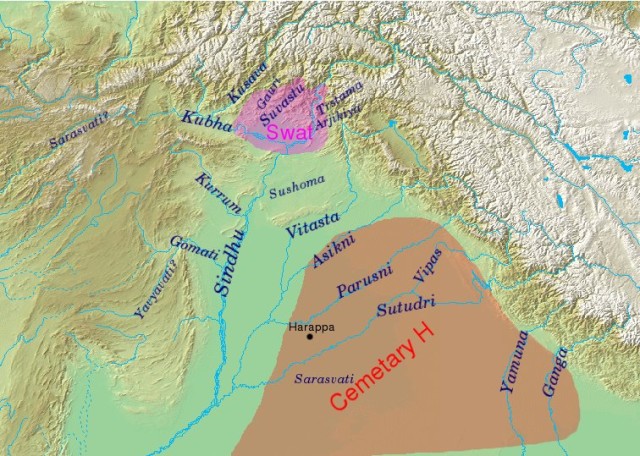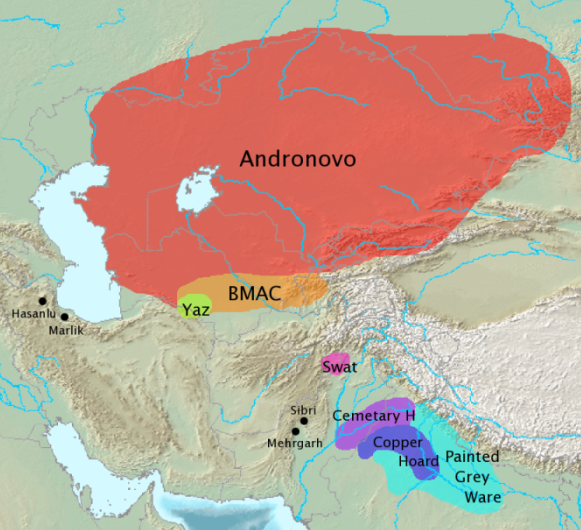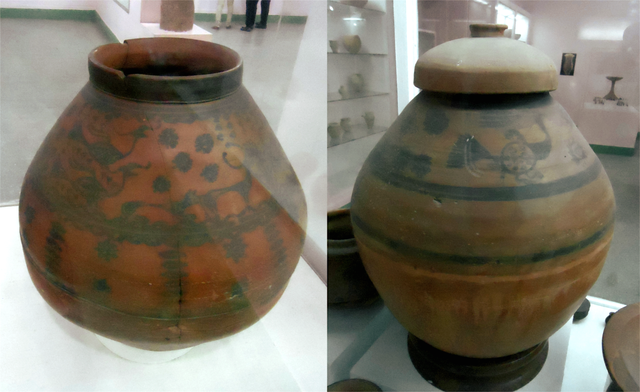
| CEMETRY H CULTURE
Geography of the Rigved, with river names; the extent of the Swat and Cemetery H cultures are indicated
Archaeological cultures associated with Indo-Iranian migrations (after EIEC) The Andronovo, BMAC and Yaz cultures have often been associated with Indo-Iranian migrations. The GGC (Swat), Cemetery H, Copper Hoard and PGW cultures are candidates for cultures associated with Indo-Aryan migrations.
Painted pottery urns from Harappa (Cemetery H period) Origins
:
According to Rafique Mughal, the Cemetery H culture developed out of the northern part of the Indus Valley Civilization around 1700 BC, being part of the Punjab Phase, one of three cultural phases that developed in the Localization Era or "Late Harappan phase" of the Indus Valley Tradition. According to Kenoyer, the Cemetery H culture "may only reflect a change in the focus of settlement organization from that which was the pattern of the earlier Harappan phase and not cultural discontinuity, urban decay, invading aliens, or site abandonment, all of which have been suggested in the past." According to Kennedy and Mallory & Adams, the Cemetery H culture also "shows clear biological affinities" with the earlier population of Harappa.
Some traits of the Cemetery H culture have been associated with the Swat culture, which has been regarded as evidence of the Indo-Aryan movement toward the Indian subcontinent. According to Parpola, the Cemetery H culture represents a first wave of Indo-Aryan migration from as early as 1900 BC, which was followed by a migration to the Punjab c. 1700-1400 BC. According to Kochhar, the Swat IV co-founded the Harappan Cemetery H phase in Punjab (2000-1800 BC), while the Rigvedic Indo-Aryans of Swat V later absorbed the Cemetery H people and gave rise to the Painted Grey Ware culture (to 1400 BC).
Together with the Gandhar grave culture and the Ochre Coloured Pottery culture, the Cemetery H culture is considered by some scholars as a factor in the formation of the Vedic civilization.
Features
:
• The use of cremation of human remains. The bones
were stored in painted pottery burial urns. This is completely different
from the Indus civilization where bodies were buried in wooden coffins.
The urn burials and the "grave skeletons" were nearly
contemporaneous.
Archaeology
:
Source :
https://en.wikipedia.org/ |


